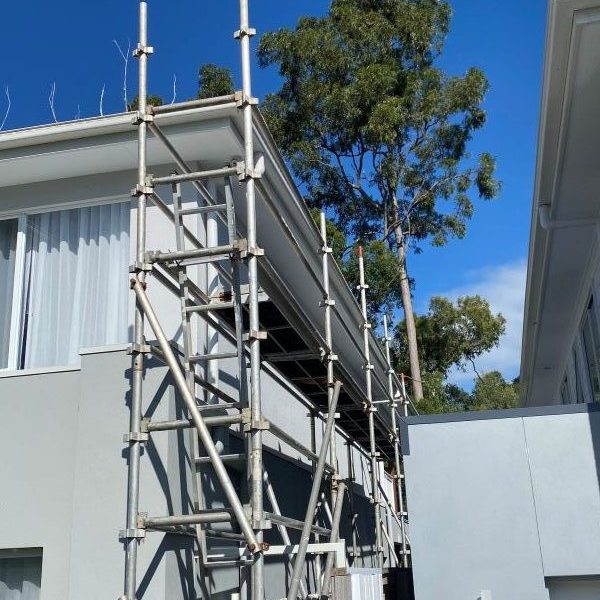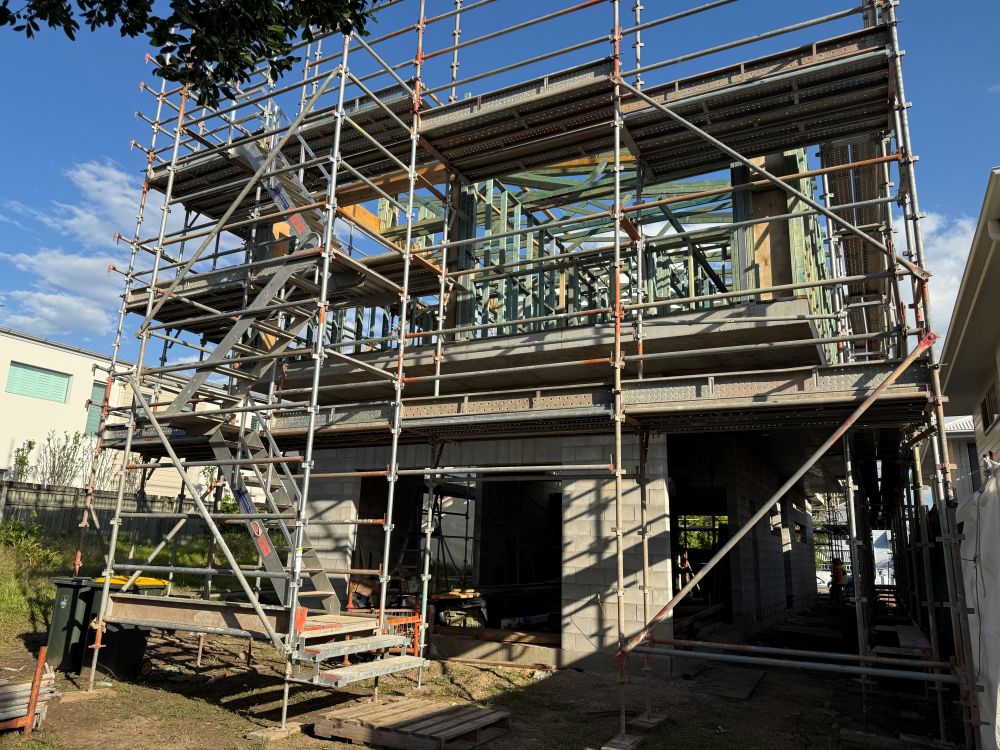Maximizing Scaffold Load Capacity: Key Safety and Compliance Insights for the Construction Sector
Understanding scaffold load capacity is crucial for ensuring safety and compliance in construction projects. This concept defines the maximum weight a scaffold can safely support during various operations. To fully grasp this essential factor, it is necessary to evaluate three primary categories of loads. These include:
- The inherent weight of the scaffold, commonly referred to as the dead load, which represents the structural weight of the scaffold itself.
- The cumulative weight of personnel, tools, and materials positioned on the scaffold, known as the live load, which fluctuates according to the number of workers and equipment present.
- External forces, such as environmental elements like wind, rain, or vibrations impacting the scaffold (classified as environmental load), which can considerably affect its stability.
Comprehending these load categories is vital, as they directly influence the total stress imposed on a scaffold throughout its operational duration. Following these load calculations is not simply a recommendation; it is a legal requirement under Australian law to ensure the safety of everyone involved in construction operations.

How to Effectively Use Our Scaffold Load and Height Calculator: A Detailed Step-by-Step Guide
While a one-size-fits-all formula for scaffold configurations does not exist, our user-friendly scaffold calculator provides a straightforward method for obtaining accurate load estimates by simplifying the essential variables involved. This invaluable resource is specifically crafted for residential builders, homeowners, and scaffold hire professionals who work within the framework defined by Australian OHS standards.
Step 1: Identify the Type of Work
Start by determining the nature of the task, which may include activities such as roof restoration, exterior painting, solar panel installation, cladding, or rendering, each requiring tailored scaffolding considerations.
Step 2: Specify the Number of Workers
For example, if two workers are scheduled to operate simultaneously on the scaffold platform, inputting this number is critical for accurately calculating the load requirements.
Step 3: Estimate the Weight of Materials
This step may involve estimating the total weight of approximately 120 kg of rendering materials or tools that will be utilized throughout the project’s duration.
Step 4: Input the Height of the Platform
Set the scaffold platform height at 4.5 metres above the ground, which is vital for ensuring adherence to safety standards.
After entering this information, the calculator will generate a recommended scaffold configuration that includes:
- The appropriate duty class (e.g., Light, Medium, or Heavy) suitable for your specific project requirements.
- An estimation of the Safe Working Load (SWL) per bay, ensuring it aligns with the necessary standards.
- The recommended scaffold type (e.g., aluminium tower or steel frame) tailored to the project specifications.
- Essential safety features (such as guardrails, soleplates, and stabilisers) required to enhance overall safety.
- Compliance requirements related to height (e.g., tie-offs required for platforms exceeding 4 metres).
Exploring Why There Is No Universal Load Formula for Scaffolding Applications
While the scaffold calculator is a practical tool for generating estimates, scaffolders and engineers do not solely rely on a single formula for several compelling reasons:
- Scaffold systems can vary significantly based on their material composition and design, including options such as aluminium, steel, modular, and tube-and-coupler systems, each with unique characteristics.
- The intended use of the scaffold greatly impacts its load capacity, as different activities demand varying levels of strength (such as painting versus masonry work).
- Manufacturers provide different platform strength and component ratings, leading to discrepancies in calculated load capacities.
Industry Standards for Accurately Calculating Safe Working Load (SWL)
Professionals in the field generally utilize the following formula as a foundational reference for estimating scaffold load capacities:
Safe Working Load (SWL) per bay = (Platform Load Rating × Safety Factor) – Scaffold Component Weight
Example Calculation:
- A platform rated for a maximum load of 600 kg
- Applying a 4:1 safety margin: using only 25% of the rating results in a usable load of 150 kg
- Subtracting the weight of the scaffold structure, which is 100 kg
- The resulting usable working load is 50 kg, representing a conservative estimate that typically does not reflect actual planning practices.
Due to the complexities associated with real-world conditions, professional scaffolders often rely on manufacturer guidelines, engineering tables, and local building codes instead of exclusively depending on this simplified formula.

Best Practices for Scaffold Evaluations by Industry Professionals
Professional scaffold evaluations typically include several critical components to ensure safety and compliance:
- Thoroughly reviewing manufacturer load data and verified span ratings for accuracy to ensure that all specifications are adhered to.
- Calculating the total live, dead, and environmental loads to guarantee a safe working environment is maintained.
- Ensuring compliance with AS/NZS duty class specifications to adhere to industry standards and regulations.
- Obtaining engineering sign-off for any custom or elevated scaffold setups that may deviate from standard practices.
- Conducting comprehensive visual and structural inspections before scaffold use to proactively identify any potential hazards.
Adapting Scaffold Practices to Address Environmental Conditions and Site-Specific Factors
Managing Wind Exposure in Coastal Queensland
In regions classified under wind zones N3 and N4, the lateral forces affecting scaffolds are significantly heightened. Therefore, scaffolds must be secured at shorter intervals, and additional bracing or shade cloth may be necessary, particularly during high wind conditions, to ensure stability and safety.
Considerations for Varied Soil and Ground Types
When dealing with unstable or sloped soil conditions, it is essential to utilize soleplates and adjustable base jacks to enhance scaffold stability. Furthermore, sites with varying elevations may require the implementation of levelled bay systems to ensure a consistently safe working environment.
Regulatory Requirements for Work Above Four Metres
In Queensland, any platform exceeding four metres in height mandates thorough inspection and certification. A scaffold handover certificate is required under the Work Health and Safety Regulation 2011, ensuring strict adherence to safety standards at all times.
Crucial Safety Regulations That Must Be Adhered To
- Work Health and Safety Regulation 2011 (QLD) outlines essential safety requirements for construction sites.
- Managing the Risk of Falls at Workplaces (Code of Practice, 2021) provides comprehensive guidelines aimed at fall prevention.
- AS/NZS 1576 and AS/NZS 4576 Standards are critical for ensuring scaffold safety compliance.
- High-Risk Work Licence (HRWL) is mandated for any scaffold setup exceeding four metres in height.
Site supervisors are responsible for conducting regular inspections, particularly after adverse weather events or significant alterations to scaffold height or load, ensuring ongoing compliance with safety regulations.
In-Depth Case Study: Successful Scaffold Application in Robina
In a recent project located on the Gold Coast, a homeowner in Robina required scaffolding for the purpose of repainting and rendering a two-storey exterior wall. The working height for this task was established at five metres, with two tradespeople utilizing approximately 200 kg of rendering materials and tools throughout the project.
Using our scaffold calculator, the proposed configuration included the following recommendations:
- Scaffold class: Medium Duty, deemed appropriate for the task at hand.
- System type: Steel frame incorporating timber planks for enhanced durability and stability.
- Additional safety measures: Implementing full edge protection, utilizing soleplates for soft earth conditions, and including wind mesh to mitigate exposure to wind hazards.
The scaffold successfully underwent all required inspections and complied with Queensland’s OHS regulations, leading to no downtime during the entire project duration, showcasing the effectiveness of meticulous planning and adherence to safety standards.
Essential Factors for Scaffold Height and Load Capacity Calculations
Determining scaffold height and load capacity is a process that should never be approached as mere guesswork. In residential projects, this detailed process is crucial for ensuring safety, managing costs efficiently, and achieving compliance with local regulations.
Given the specific requirements applicable to Australian conditions, particularly in southeast Queensland, we strongly recommend obtaining precise scaffolding quotes and ensuring that all installations are conducted by qualified professionals.
Contact CanDo Scaffolding Hire for Expert Guidance and Comprehensive Solutions
For more detailed information regarding our services, please feel free to reach out to us at 1300 226 336 or email us at [email protected] at your convenience.
We offer a wide range of scaffolding solutions, including void protection platforms and roof edge protection, specifically tailored to meet the unique requirements of any residential or light commercial construction project.
Understanding Scaffold Load Capacity for Residential Projects
The Article: Scaffold Load Capacity Insights for Residential Projects first appeared on https://writebuff.com
The Article Scaffold Load Capacity for Residential Construction Projects Was Found On https://limitsofstrategy.com
The Article Scaffold Load Capacity in Residential Construction Projects First Appeared ON
: https://ad4sc.com

